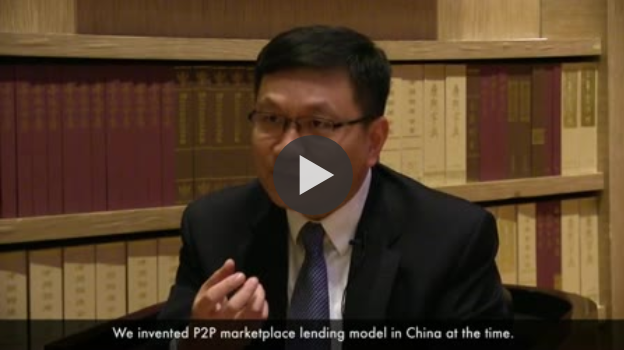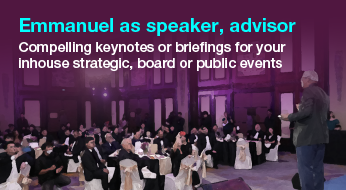I have been spending a lot time building my understanding of the peer-to-peer industry. You will be seeing some of my thinking coming through in the completely revamped The Asian Banker’s Future of Finance Summit 2017 in June. In December and in my book that I have been working on forever and in our coverage under anew programme called “Peer2Peer Audit”.
I had a chat with Tang Ning, the entrepreneurial founder of @CreditEase (click here to watch the video or read the transcript http://thebankingconversation.com/tangningtbc2017), currently the world’s largest peer-to-peer lender, who has been re-calibrating his business from that of a pure P2P play to add a $6b wealth management business, driven, as it were, by a stronger investor interest than there are qualified borrowers. My quick personal observations as I l listened to Tang Ning’s replies and other conversations I am having right now, were as follows:
– It is the Chinese P2P players who are broadening their business models into payments and wealth management. The US players are choosing to keep to the traditional lending business, sometimes going down to the higher risk segments for unsecured credit and second hand automobile lending.
– This online-offline dichotomy is totally “fluid”. I estimate that about 80-90 percent of the real work in credit evaluation, loan disbursement and collection are done manually. The platforms are more for originating customers. A lot of work remains in building greater automation in the process chain of the P2P business. As for the discretionary wealth management business of Creditease, its fully manual, as far as I can see. 3,200 advisers in 150 offices.
– Everyone outside this industry is flabbergasted how it can scale a virtually unsecured lending base in what bankers would deem as highest risk customers so quickly and with so little reported NPLs, while everybody within the industry (regardless of player) are completely chilled about how secure their business really is. The secret, it seems to me, is …. the mobile phone! Lend to someone who is interacting with you primarily with his mobile device, especially in the previously unbanked segment, and you can make several assumptions about his social ecosystem that makes him belong to some stable value chain and lifestyle that did not feature in credit risk profiles before, and they keep coming back. Even the fraudsters who use this platform are easier to monitor.
– The secret to success in the P2P lending business is simply understanding one customer segment intuitively. Every single P2P lender I know are defined by a “native familiarity” with a given customer segment. In the case of Yirendi, it was student loans, because that was where Tang Ning’s interest originated. Likewise, others lend to small businesses that are part of other supply chains. The integrity inherent in the lending portfolio, or customer base for unsecured lending, in the P2P world is actually profoundly interesting. The shift to the mobile device as the lending platform adds another layer of integrity because owning a mobile device denotes a certain income stream, belonging to a certain community segment, lifestyle and so on that adds to the loan being more secure than if the borrower did not have a mobile device.
– Building a financial services business into the Financial inclusion theme has massive potential, something that even traditional bankers have not seen in their professional lives. in countries like China, India, Brazil, Nigeria, Vietnam, Indonesia, the Philippines and so on, financial services is only just reaching the masses.
– Tang Ning is not without his distractions. The Chinese blogsphere sometimes sounds like it wants to bring down the P2P players down with accusations of Ponzi schemes and so on, to which the better players reply they categorically don’t do. Of the 4000 P2P lenders in China alone, more than 1000 were discovered to be fraudulent, hence the millstone around this industry. But that in itself is a true 21st century story of how this industry originated as a truly entrepreneurial enterprise, before the regulations were put in to regulate it. The problem now is not the 1000 fraudulent players, but the remaining 3000 that try to do the right thing.
Meeting people like Tang Ning makes me want to believe that being in this business for more than 10 years, a pioneer, and staying in there to deepen their reach, I’d take the bet that they are serious about doing the right thing and are in fact defining how the financial services industry is being disintermediated.
More notes in future…..








